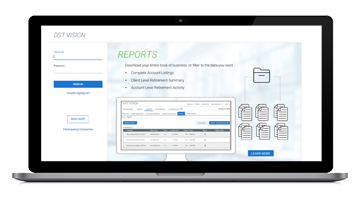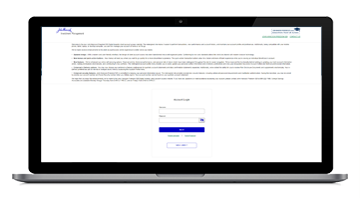Tariffs and trade: three investment takeaways in the conflict’s opening round
As the calendar flipped to February, long-simmering threats of a trade war transitioned into a new high-stakes phase as the United States imposed tariffs against Canada, Mexico, and China, triggering retaliatory moves and negotiations. While the highly fluid situation fueled initial market volatility, we encourage investors to be mindful of three current market dynamics and to avoid overreacting to the back and forth of the daily news cycle.

Less than two weeks after taking office, the Trump administration raised the stakes on February 1 by announcing plans to levy 25% import tariffs on goods from Mexico and Canada, with Canadian energy products and Chinese goods facing more modest 10% tariffs. As America’s three largest trade partners responded, initial talks between the United States and Mexico resulted in a one-month pause in their tariffs as those two countries entered negotiations in hopes of reaching a longer-term compromise. Hours later, Canada announced a similar 30-day pause pending further talks with U.S. negotiators.
The initial knee-jerk reaction from global markets had a risk-off tone as investors bid up prices of currencies such as the U.S. dollar, the Japanese yen, and global sovereign bonds. On the other hand, more speculative segments of the markets such as cryptocurrencies experienced more intense selling pressures.
From our perspective, investors may wish to resist the urge to overreact to incremental developments in a highly fluid situation. As demonstrated by the announcements of negotiated pauses in tariffs involving the United States, Mexico, and Canada, deals may emerge as quickly as tariffs are implemented, potentially causing markets to whipsaw unpredictably.
Here are three takeaways that we urge investors to consider beyond tariffs.
1 The global economy looks solid—The global economy began 2025 on an improving trend, with readings on manufacturing activity looking especially strong. It remains to be seen whether these readings may have been somewhat inflated by expectations of tariffs and anticipatory inventory stocking, which may have fueled heightened manufacturing activity. However, we've seen an uptick in business surveys of corporate purchasing managers and Institute of Supply Management reports.
2 U.S. earnings are strong—Three weeks into earnings season, initial fourth-quarter reports from S&P 500 Index companies have been coming in strong. As of January 31, fourth-quarter earnings were expected to rise 13.2% compared with the year-ago period—the strongest growth since the fourth quarter of 2021.
3 Keep an eye on equity valuations—In our view, the biggest current market risk relates to valuations, as we believe that current market levels have priced in a lot of good news. The trailing price-to-earnings ratio of the S&P 500 as of January 31 reached over 27x—an elevated level that's historically rare.1 In fixed income, the high-yield bond spread fell to 256 basis points (bps) on January 24—near a 20-year low of 233 bps.2 Such a tight high-yield spread suggests limited value in lower-quality bonds.
Given these circumstances, what options do investors have to seek to protect portfolios, should escalating tariffs incrementally weaken U.S. economic growth? Two issues are important to consider, in our view:
1 Currency shifts—Historically, the U.S. dollar has tended to strengthen when the United States imposes tariffs. A strong U.S. dollar may help to mitigate the higher costs resulting from tariffs, as the United States can buy foreign goods at cheaper foreign currency rates. The dollar is also considered a risk-off currency, meaning that its performance often improves as investors become more risk averse and shift to higher-quality currencies such as the dollar.
2 Favorable math for high-quality bonds—As a result of a recent rise in yields, high-quality bonds currently offer the best income potential in over 20 years. The yield of the Bloomberg U.S. Aggregate Bond Index reached 4.86%,1 offering attractive income opportunities, in our view. If tariffs create a more substantial economic slowdown, we believe that the U.S. Federal Reserve will likely need to cut interest rates. In our view, locking in higher-quality bond income potential is likely to be beneficial in this type of environment as investors can get paid to wait out the tariff-related volatility.
Looking ahead—quality is paramount
Overall, in the wake of the latest tariff developments, our broad market views for 2025 remain unchanged across global equities, as we continue to focus more on stocks’ quality value attributes rather than the growth factor. To us, this is a way to manage valuation risk and add exposure to high-quality cyclical sectors that may potentially benefit from a modest economic re-acceleration. As for fixed income, we continue to prefer a mild credit bias, as high-yield spreads look expensive to us. We prefer U.S. investment-grade corporate bonds, mortgage-backed securities, and municipal bonds. If valuations change over the course of the year, we'll be on the hunt for other opportunities.
1 FactSet, as of 1/31/25. 2 FactSet, as of 1/24/25.
Important disclosures
The S&P 500 Index tracks the performance of 500 of the largest publicly traded companies in the United States. The Bloomberg U.S Aggregate Bond Index tracks the performance of U.S. investment grade bonds in government, asset-backed, and corporate debt markets. It is not possible to invest directly in an index. One hundred basis points (bps) equals one percent.
Investing involves risks, including the potential loss of principal. Financial markets are volatile and can fluctuate significantly in response to company, industry, political, regulatory, market, or economic developments. The information provided does not take into account the suitability, investment objectives, financial situation, or particular needs of any specific person.
Views are those of the authors and are subject to change. No forecasts are guaranteed. This commentary is provided for informational purposes only and is not an endorsement of any security, mutual fund, sector, or index, and is not indicative of any John Hancock fund. Diversification does not guarantee a profit or eliminate the risk of a loss. Past performance does not guarantee future results.
All overviews and commentary are intended to be general in nature and for current interest. While helpful, these overviews are no substitute for professional tax, investment or legal advice. Clients and prospects should seek professional advice for their particular situation. Neither Manulife Investment Management, nor any of its affiliates or representatives (collectively “Manulife Investment Management”) is providing tax, investment or legal advice.
This material is intended for the exclusive use of recipients in jurisdictions who are allowed to receive the material under their applicable law. The opinions expressed are those of the author(s) and are subject to change without notice. Our investment teams may hold different views and make different investment decisions. These opinions may not necessarily reflect the views of Manulife Investment Management. The information and/or analysis contained in this material has been compiled or arrived at from sources believed to be reliable, but Manulife Investment Management does not make any representation as to their accuracy, correctness, usefulness, or completeness and does not accept liability for any loss arising from the use of the information and/or analysis contained. The information in this material may contain projections or other forward-looking statements regarding future events, targets, management discipline, or other expectations, and is only current as of the date indicated. The information in this document, including statements concerning financial market trends, are based on current market conditions, which will fluctuate and may be superseded by subsequent market events or for other reasons. Manulife Investment Management disclaims any responsibility to update such information.
Manulife Investment Management shall not assume any liability or responsibility for any direct or indirect loss or damage or any other consequence of any person acting or not acting in reliance on the information contained here. This material was prepared solely for informational purposes, does not constitute a recommendation, professional advice, an offer or an invitation by or on behalf of Manulife Investment Management to any person to buy or sell any security or adopt any investment approach, and is no indication of trading intent in any fund or account managed by Manulife Investment Management. No investment strategy or risk management technique can guarantee returns or eliminate risk in any market environment. Diversification or asset allocation doesn’t guarantee a profit or protect against the risk of loss in any market. Unless otherwise specified, all data is sourced from Manulife Investment Management. Past performance does not guarantee future results.
This material has not been reviewed by, and is not registered with, any securities or other regulatory authority, and may, where appropriate, be distributed by Manulife Investment Management and its subsidiaries and affiliates, which includes the John Hancock Investment Management brand.
Manulife, Manulife Investment Management, Stylized M Design, and Manulife Investment Management & Stylized M Design are trademarks of The Manufacturers Life Insurance Company and are used by it, and by its affiliates under license.
4214978







